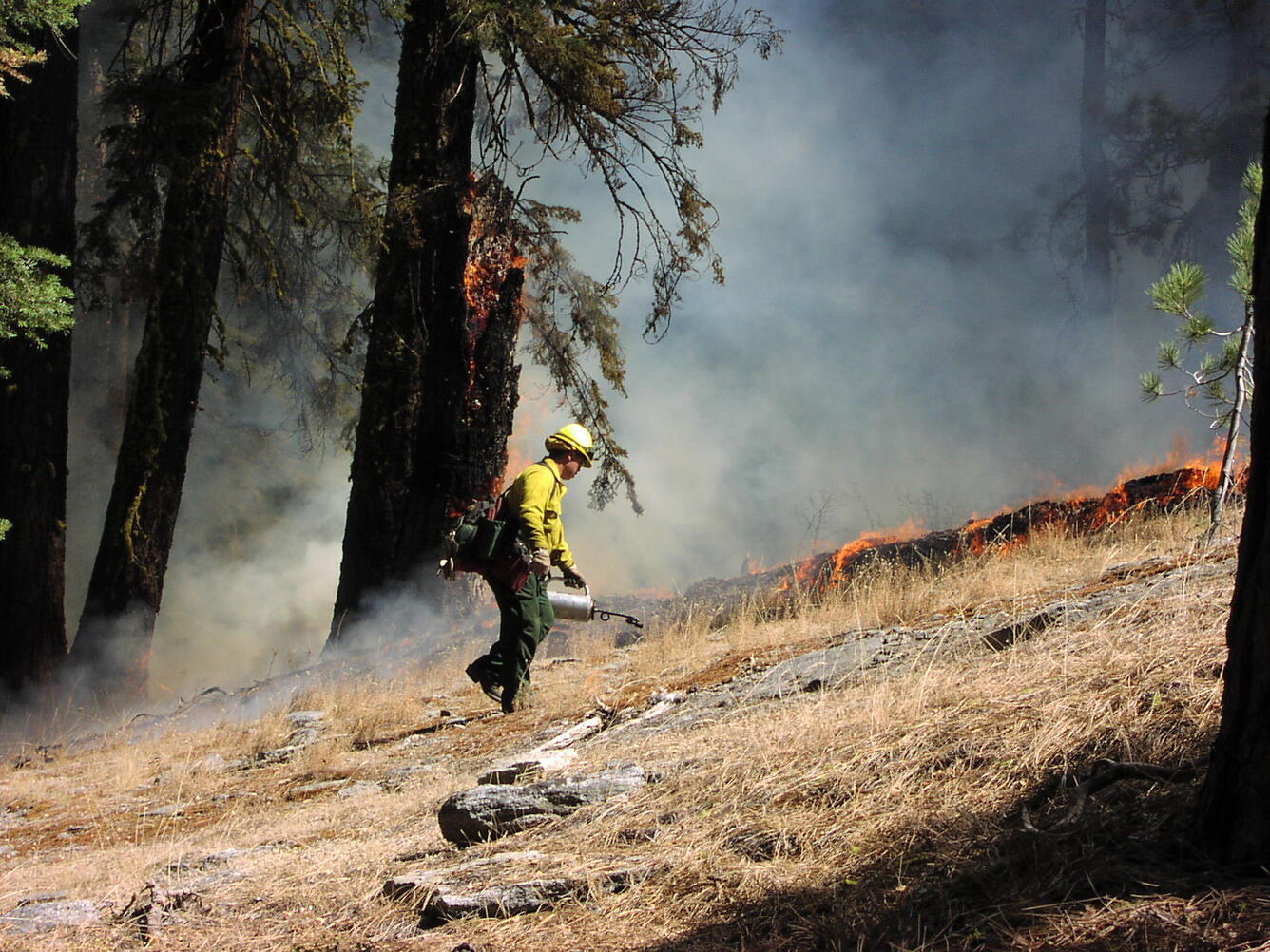WERC scientists are defining the past, present, and future of wildfires for wildlife and human communities. Explore this webpage to learn about specific, ongoing projects across California and parts of Nevada.
Wildfires may seem like untamable forces of nature, but there are very real environmental and human factors driving them. Scientists with the U.S. Geological Survey, Western Ecological Research Center (WERC) are providing resource managers with regional- and national-scale findings on the effects of historical fire and forest management, influences on current fire patterns, and the future of fire across California.
WERC is a USGS Ecosystems Mission Area center serving primarily California and Nevada. Eight WERC Principal Investigators operate out of field stations located in the two states’ diverse ecosystems. Their unique positions allow them to study wildfire history and behavior from the chaparral landscapes of southern California, to the Mojave Desert, and the forests of the Sierra Nevada mountain range. WERC scientists’ studies of this complex network of ecosystems lends their research both small- and large-scale applications.
USGS natural hazards and ecosystems science can assist managers and planners in finding solutions to reduce the risk of home and habitat loss — and help California truly learn to live with fire. Examples include investigations into the characteristics of wildfires from the Sierra Nevada to the Mojave; effects of wildfire on Greater Sage-grouse populations and habitat; recovery and post-fire restoration of critical habitat for listed species; changes in desert landscapes from increasingly frequent fires; effects of habitat disturbance, ash, and debris from wildfires on amphibians and reptiles; studies on fire trends and efficacy of fire management strategies to enhance forest resilience; and environmental and anthropogenic factors influencing wildfire size, severity, and frequency in southern California.

Download the current handout on WERC's fire science and explore specific projects under the "Related Science" tab.


Below are science projects associated with this topic.
Wildland Fire Science in Forests and Deserts
Process-based Approaches for Ecological Restoration of Degraded Drylands
Conservation of Rare, Sensitive, and At-risk Desert Plant Species
Aridlands Disturbances and Restoration Ecology
Desert Tortoise Ecology, Health, Habitat, and Conservation Biology
Amphibian Research in Southern California
Population Structure and Demography of the Least Bell’s Vireo and Southwestern Willow Flycatcher and Use of Restored Riparian Habitat
Distribution, Occupancy and Population Genetic Structure of California Gnatcatchers in Southern California
Fire Severity Trends in the Western U.S.
Forest Restoration in the Western U.S.
Drought and Western Forests
Environmental Change and Fire
WERC scientists are defining the past, present, and future of wildfires for wildlife and human communities. Explore this webpage to learn about specific, ongoing projects across California and parts of Nevada.
Wildfires may seem like untamable forces of nature, but there are very real environmental and human factors driving them. Scientists with the U.S. Geological Survey, Western Ecological Research Center (WERC) are providing resource managers with regional- and national-scale findings on the effects of historical fire and forest management, influences on current fire patterns, and the future of fire across California.
WERC is a USGS Ecosystems Mission Area center serving primarily California and Nevada. Eight WERC Principal Investigators operate out of field stations located in the two states’ diverse ecosystems. Their unique positions allow them to study wildfire history and behavior from the chaparral landscapes of southern California, to the Mojave Desert, and the forests of the Sierra Nevada mountain range. WERC scientists’ studies of this complex network of ecosystems lends their research both small- and large-scale applications.
USGS natural hazards and ecosystems science can assist managers and planners in finding solutions to reduce the risk of home and habitat loss — and help California truly learn to live with fire. Examples include investigations into the characteristics of wildfires from the Sierra Nevada to the Mojave; effects of wildfire on Greater Sage-grouse populations and habitat; recovery and post-fire restoration of critical habitat for listed species; changes in desert landscapes from increasingly frequent fires; effects of habitat disturbance, ash, and debris from wildfires on amphibians and reptiles; studies on fire trends and efficacy of fire management strategies to enhance forest resilience; and environmental and anthropogenic factors influencing wildfire size, severity, and frequency in southern California.

Download the current handout on WERC's fire science and explore specific projects under the "Related Science" tab.


Below are science projects associated with this topic.













